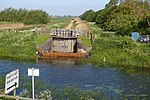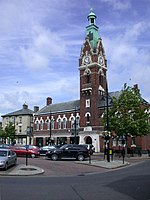Stonea railway station
1847 establishments in EnglandDisused railway stations in CambridgeshireEast of England railway station stubsFenland DistrictFormer Great Eastern Railway stations ... and 4 more
Pages with no open date in Infobox stationRailway stations in Great Britain closed in 1966Railway stations in Great Britain opened in 1847Use British English from December 2017

Stonea railway station is a former railway station serving the small village of Stonea, Cambridgeshire. Although the station closed in 1966, the line is still in use.
Excerpt from the Wikipedia article Stonea railway station (License: CC BY-SA 3.0, Authors, Images).Stonea railway station
Sixteen Foot Bank, Fenland District
Geographical coordinates (GPS) Address Nearby Places Show on map
Geographical coordinates (GPS)
| Latitude | Longitude |
|---|---|
| N 52.518 ° | E 0.1495 ° |
Address
Sixteen Foot Bank
Sixteen Foot Bank
PE15 0DU Fenland District
England, United Kingdom
Open on Google Maps







